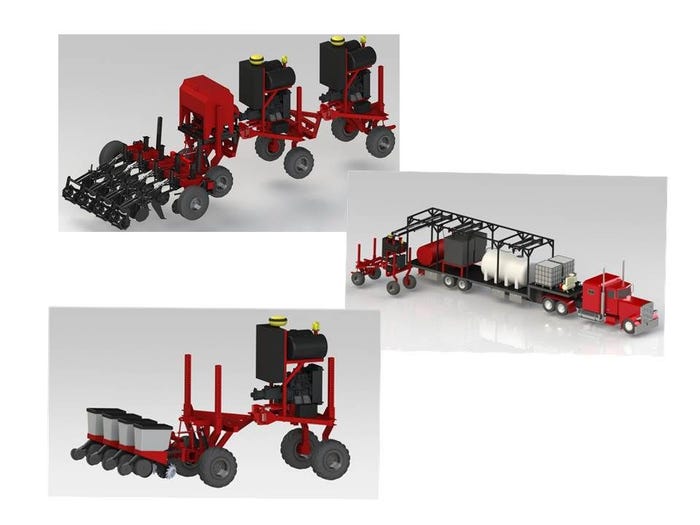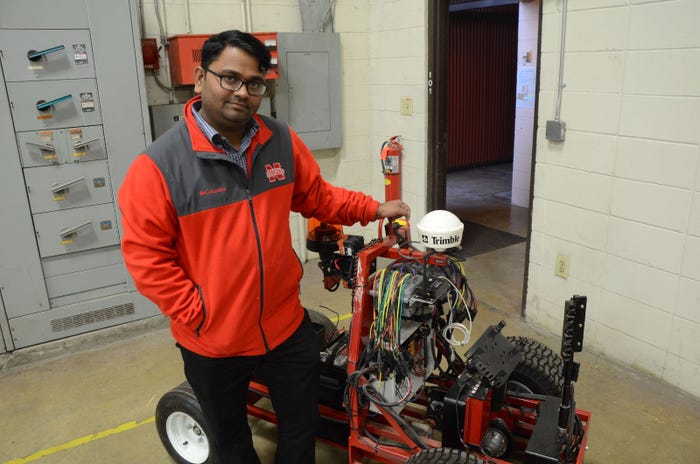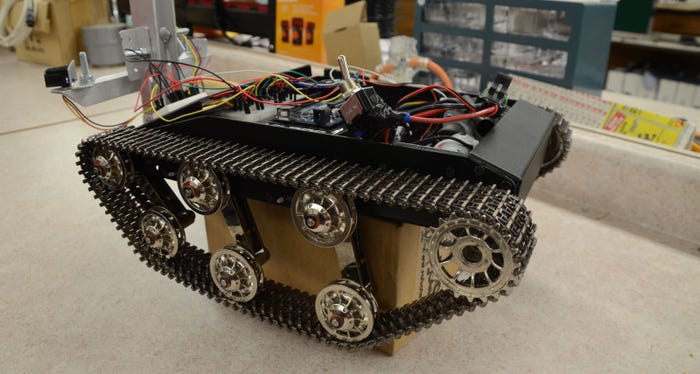
Agriculture is going through what Scott Shearer refers to as its fourth revolution. First it was mechanization, then hybrid seed and commercial fertilizer, and then biotechnology. Now, it's the Internet of Things. Being connected to the Internet isn't out-of-the-ordinary these days, whether it's a smartphone, tablet, and automobile, and yes, tractors and combines.
But what's next for agriculture? Shearer, professor and chair of the Ohio State University's Department of Food, Agriculture and Biological Engineering, notes agriculture is getting automated. While ag equipment has been getting more technologically advanced, it's also been getting bigger. According to ballasted tractor mass data from the University of Nebraska-Lincoln's Tractor Test Laboratory, since 1960, the largest tractors have increased in size at a rate of about 900 pounds per year.
"I think what's going to drive the trend toward automation in North America is soil compaction. I think we're paying a very high price, a penalty in terms of soil structure and soil quality because of the size of the equipment," Shearer says. "As we continue to have manned equipment, it's going to continue to increase in size. I see nothing driving equipment size in the other direction."
A look at autonomous ag
That's where autonomous ag equipment comes in. Shearer and his students at OSU have created 3D models of what automated tractors and combines might look like, and it's quite a bit different than the 50,000-pound behemoths you're used to. These 60 to 70 horsepower machines weigh about 10,000 pounds.
 Shearer and his students' 3D model of what the autonomous cropping system of the future might look like.
Shearer and his students' 3D model of what the autonomous cropping system of the future might look like.
UNL biological systems engineering assistant professors Santosh Pitla and Joe Luck researched autonomous agriculture at the University of Kentucky when Shearer was a professor and chair of the biosystems and ag engineering department at UK, and are continuing their research on autonomous machines at UNL.
But working with smaller equipment and less horsepower isn't as simple as scaling down a modern tractor or combine.
For example, Luck notes the equation for threshing capacity changes drastically when going from a 500-horsepower Class 9 combine down to a 40-horsepower robotic combine.
"The threshing mechanism right now is so energy consumptive. On a low-power system, how do you do that?" says Luck. "We certainly have examples of smaller harvesters, like plot combines, so there are options for smaller harvesters. The logistical solutions will be more complex if we move to many small harvesters – also smaller grain transport mechanisms to move grain away from the field harvesters."
When working with multiple autonomous machines, there's the question of how those machines interface with each other or their human operators. "The challenge isn't the hardware or electronics," Pitla says. "We have a tremendous amount of computing power. The challenge is to build intelligence into them."
This requires programming an autonomous reaction – whether it's the machine reacting to another machine to do the job required or simply as a failsafe when something goes wrong. While at the University of Kentucky, Pitla and Luck designed and built a machine that demonstrates this kind of multi-robot communication system, referred to as Multi-Robot System Control Architecture (MRSCA).

Santosh Pitla with the robot he designed and built to demonstrate multi-robot communication system. This includes several different states that machines use to perform specific operations, as well as roles to wait, go to a set location, or lead or follow.
MRSCA is made up of several different states that machines use to perform specific operations, as well as roles to wait, go to a set location, or lead or follow. This includes homogeneous systems that don't communicate or cooperate with one another, as well as heterogeneous machines that work with modest cooperation and absolute cooperation, depending on the field operation – for example, operations like harvesting requires absolute cooperation between the grain cart and harvester.
Advantages of automation
Because the machines are autonomous, they can work 24 hours a day. Multiple machines can operate in the field at a time, and they can be monitored from an air-conditioned office. Because of their small scale, they can be hauled on a tractor trailer between fields and serviced from the bed of a pickup truck.
"You don't need a cab, an air suspension seat, leather seat, or seat heaters, you don't need high-intensity discharge lighting, you don't need a fancy hood or flashy paint job," Shearer says. "The iron becomes secondary – it's the technology that drives everything."

A smaller inter-row machine designed by Pitla that can traverse in between rows to monitor the field's microclimate to monitor disease pressure and plant populations. A mounted sensor ensures the robot maintains an equidistant space between the rows.
Pitla says these robots may be rolling through farmers' fields as soon as ten years from now.
"I think there will definitely be a transition," he says. "The transition might not be very long. We have so many smart devices now, and farmers are already used to the technology. The robotics designer might a design user-friendly system and it could be as easy as setting up auto-steer on your tractor."
Read more about autonomous agriculture in the April Nebraska Farmer.
About the Author(s)
You May Also Like






